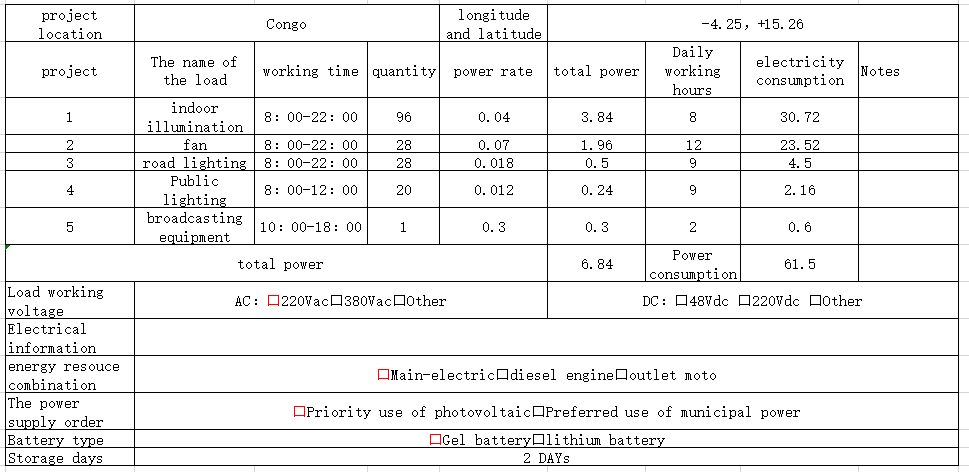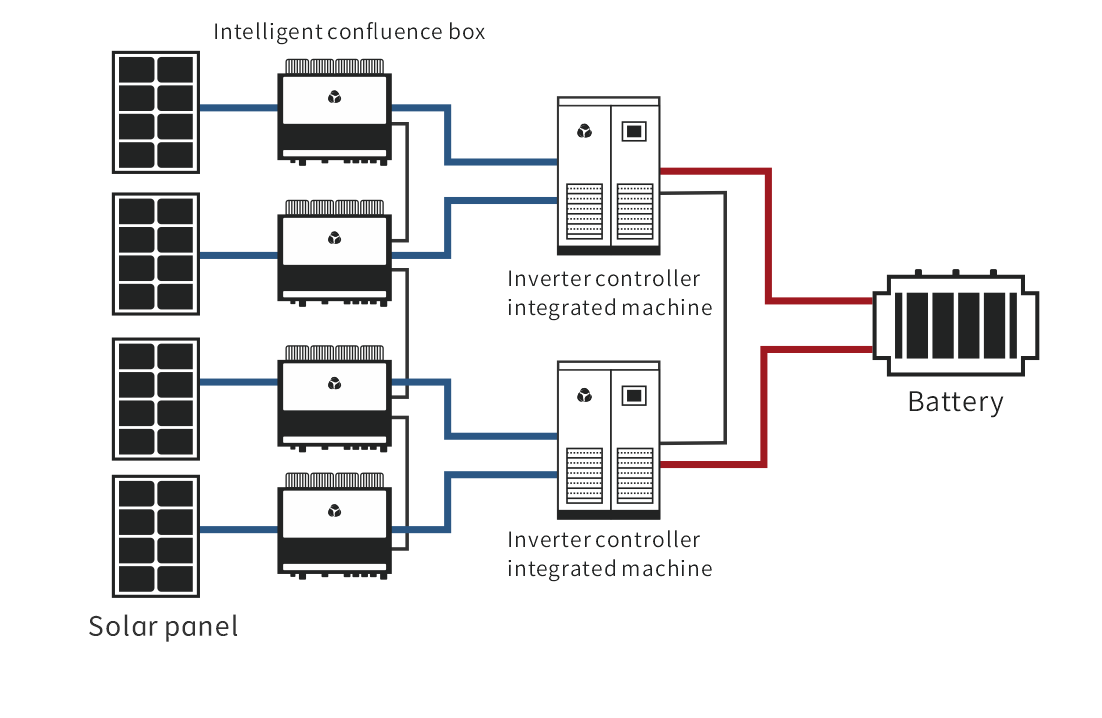- Plant by plant decommissioning strategy of coal power in China,soalr power will be the replacer
- Forecast of PV installations in 2021
- The thing that should be paid attention to when installing photovoltaic off-grid system
- The demand for photovoltaic projects in emerging countries is growing rapidly and the industry is recovering.
- Will Europeans look to solar power air conditioners to relieve the heat?
How to design an off-grid solar power system

There are a large number of regions in the world, which are far away from power plants and public power grids, without electricity, it is difficult to enjoy the information and convenience brought by modern civilization to life. Off-grid Solar power generation system is an independent and self-supporting renewable energy power supply system, which can solve their basic electrical problems.
Typical off-grid solar power generation system is mainly composed of solar panel, scaffold, solar controller, off-grid inverter, battery, power distribution box of six parts, After the solar module is connected to the solar controller, it will first meet the user load , and then the excess electricity will be stored in batteries for the night and rainy day, when the battery without electricity, most of the inverter can also support mains input (or diesel generator) as a supplementary energy to power the system.
off-grid solar power systems design is different from grid generation system, we need to consider the user load size, power consumption, factors such as the local climate off-grid solar power systems design is different from grid generation system, we need to consider the user load size, power consumption, factors such as the local climate conditions, according to the actual needs of customers to choose a different design, and this is relatively complex. to ensure the off-grid system is reliable to work, it is necessary to investigate the demand of the customer. The design of the off-grid solar system mainly includes the selection of inverter, the design of module capacity and the design of battery capacity:
Inverter selection
the inverter power is determined according to the user load size and type
The choice of the size of the inverter power generally not less than the total power load, but considering the service life of the inverter and the subsequent expansion, we suggest that the inverter power needs to be considered with certain overmeasure, generally is 1.2 ~ 1.5 times of load power, on the other hand, if the load contains a similar to the refrigerator, air conditioning, water pumps, smoke lampblack machine, etc. With the perceptual load of the motor (the starting power of the motor is 3 ~ 5 times the rated power), the need to start the power of load into consideration, namely the start power of the load is smaller than the maximum impact power of the inverter. The following is the calculation formula of power selection of the inverter for reference in design.
Inverter power =load power * coefficient of inverter overmeasure / Inverter power factor
Generally, the coefficient of inverter overmeasure is 1.2-1.5, and the impact power of inductive load should be considered
During the day, photovoltaic modules produced by using part of the power supply load end, the remaining part of the battery, at night or when the solar radiation is not enough, will provide the electrical energy stored in the storage battery to the load end-use, therefore, in no mains or no diesel engine as supplementary energy situation, under the condition of load on the electricity consumption by all from the daytime, considering the different season, different parts of the light intensity difference, in the light of the worst seasons, the capacity of the photovoltaic panels should also to meet the load demand. The following is the capacity calculation formula of photovoltaic panels:
Power component=(Day power consumption*Overmesure coefficient)/(Peak sunshine hours in the worst months*system efficiency )
Battery capacity determination
according to the night power consumption or backup time to determine the battery capacity
The battery of photovoltaic off-grid system is mainly used for energy storage to ensure that the load can work normally when solar radiation is insufficient. For a solar off-grid system with important load, the design of battery capacity should consider the maximum number of rainy days. Ordinary photovoltaic off-grid system load power supply requirements are not high, considering the cost of the system, we do not have to consider the number of rainy days, as long as according to the actual light intensity to adjust the use of load.In addition, most of the photovoltaic off-grid systems use lead-acid batteries. Generally, the discharge depth of lead-acid batteries is 0.5-0.7. The design of battery capacity can refer to the following formula:
Battery capacity = days of power supply * average daily load / maximum discharge depth coefficient
The typical design scheme of 10kVA off-grid solar power systems
Project background: off-grid solar power systems were designed for a school in the capital of Congo to meet its daily electricity needs.
project demand survey
In the early stage of the design plan, customer demand survey (load information shall be accurate) shall be made as follows:

Selection of inverter
The load of the customer is mainly classroom lighting, classroom fan, public place lighting, wall lighting, and broadcasting system, etc. The total load power is 6.84kw, the power of the inverter is not less than 9.8kva, the TUNTO inverter can be selected, and the output power is 10kVA.
Component capacity determination
According to customer demand questionnaire can be seen, the school every day on average power consumption of 61.5 kWh, local lighting is good, calculated according to 4.23 h of sunshine time each day, 1.1 times component configuration allowance, design USES 88 pieces of 270 w polycrystalline PV modules, total power is 23.76 kW, generating a day on average 100.5 kWh, considering the system efficiency, generally 0.8, available electricity 80 kWh each day.
Determine the battery capacity
School lighting is most of the time in the evening, considering the service life of the battery, should be appropriate to increase the battery capacity, battery standby time and request for 2 days, take the battery discharge depth is 0.7, the project adopts the section 110 of 1000 ah / 2 v TUNTO gel battery series, the total capacity of 220KWh, available capacity of about 154 KWH, can satisfy the demand of the backup time of 2 days.
System scheme diagram



 miko@tunto.cn
miko@tunto.cn
















